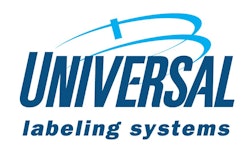
Many manufacturers want to adjust or break fixed-price contracts and receive other concessions.
Scholle Corp., in recent weeks, showed one result of the current economic climate when it announced it would shutter two packaging facilities in western Michigan and eliminate upward of 100 jobs. In part, Scholle was reacting to high oil prices because it uses petroleum-based products to make bulk-packaging materials.
But all in all, these are promising times for anyone who is a participant in the contract packaging industry. The business is no longer operating below the radar. In fact, people are watching you who potentially could be very important to the future of the business.
Venture capitalists and financing companies have begun inquiring about the nature and the growth of the industry. Several of them—or their agencies—have called me as part of their fact-finding work. Although some of the data they’re seeking is very specific and not yet credibly available, these financing companies clearly see that contract packaging as a business is on the upswing and they may want to get in on the ground floor as investors.
These financers might sink money into individual co-packers to help build new plants, purchase machinery, or expand on their services. One of the things these private capitalists are learning about contract packaging is that changing market dynamics, such as shorter product lifecycles and channel-specific packaging, are steering the industry’s future course. In more cases, the changing nature of the way consumer products are marketed is making the use of a co-packer a smart decision for product manufacturers who lack the capability in-house to meet evolving packaging demands. These dynamics make the industry a potentially attractive target for investors, who bring both experience with early-stage companies and a network of contacts with them.
I had a recent discussion with Philip Connelly, president of Vietti Foods Co., which both provides and uses co-packing services. Connelly and others foresee a future in which contract packagers consolidate. “Those remaining suppliers will be able to invest in emerging technologies, solidifying their positions as low-cost producers,” he says.
To all of this I add: Make sure your company is on solid ground and that you maximize your value proposition to potential purchasers of your services by staying attuned to changing market forces.
An article inside this issue offers one example. Anderson Packaging recognizes potential in the graying of America on its bottom line and offers “compliance-prompting” pharmaceutical packaging for its customers. Anderson Packaging has gained a reputation as a product-launch specialist, and attributes such as this may capture the interest of financers who can help your company grow as it tackles the challenges posed by today’s product manufacturers.
Give me a call at 630/897-7158 or e-mail me at [email protected]. My fax number is 630/896-0214. And please feel free to pass along news items or story ideas to me.





























